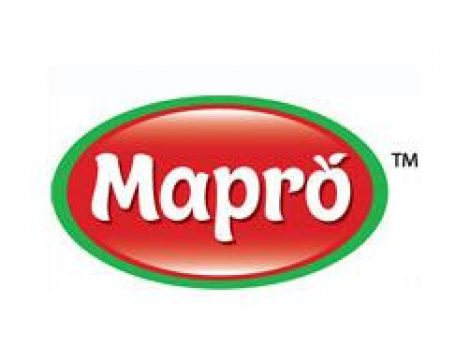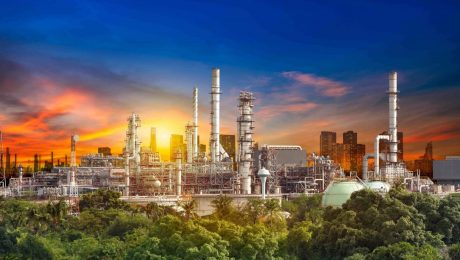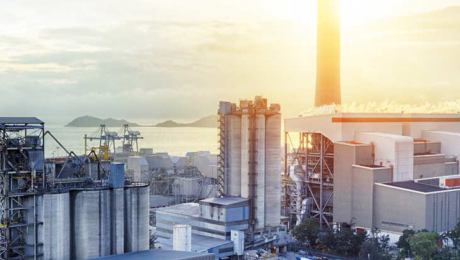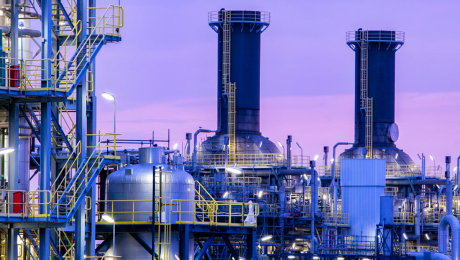- Home
- About Us
- Products
- EPC projects
- Technology
- Services
- Clients
- Media
- Blog
VIEW ALL -
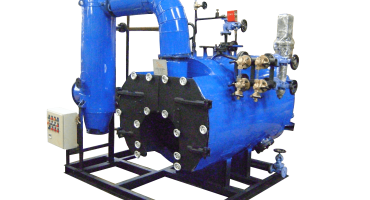 19 July 2023 by bullweb, in Boiler
19 July 2023 by bullweb, in BoilerA Guide to Boiler Maintenance in Chemical Processing Plant
Steam boiler systems are irreplaceable in the chemical process industries. Among...READ MORE +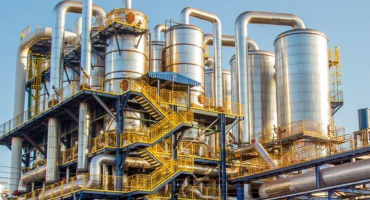 19 October 2022 by bullweb, in Steam Boiler,Steam Jackets
19 October 2022 by bullweb, in Steam Boiler,Steam JacketsSteam Jackets in Boilers | Definition, Types, and Applications
Steam is integral to meet various process operational requirements in manufactur...READ MORE +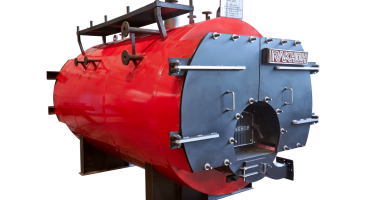 17 October 2022 by bullweb, in Boiler,Steam Boiler
17 October 2022 by bullweb, in Boiler,Steam BoilerSigns that indicate replacement for steam boilers
Steam boilers are vital equipment for steam generation in the process and manufa...READ MORE +
- Careers
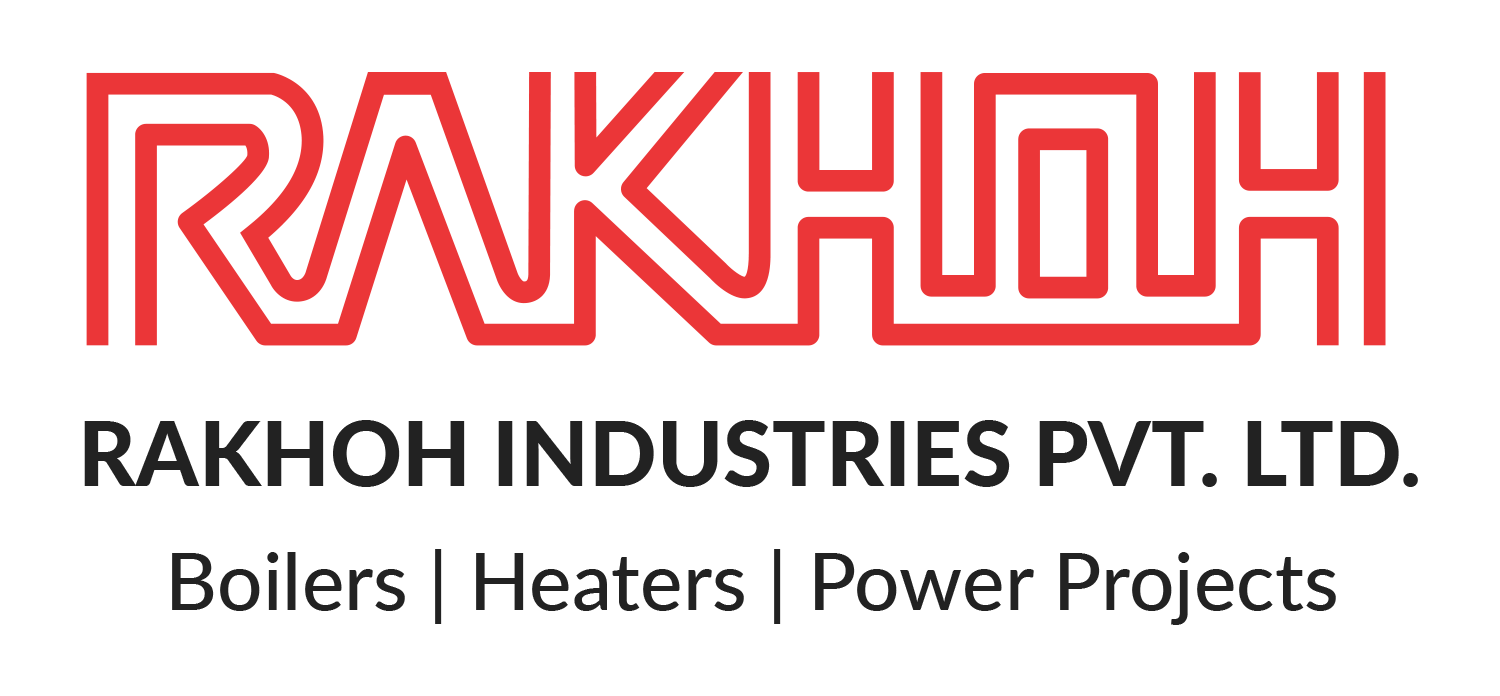
BOILER ACCESSORIES, THERMIC FLUID HEATERS & SPECIALTY FABRICATION.
+9120 - 66308333
Email: enquiry@rakhoh.com
RAKHOH BOILERS
S-11, T Block, M.I.D.C.,Bhosari, PUNE - 411 026. Maharashtra, India
BLOG & STORIES
Steam boilers require proper combustion to generate high-quality steam for process industries. With industries striving to minimize energy utilization and carbon footprint, plant operators and managers are always looking for methods to accelerate boiler efficiency and ensure less emission. Fuel usage is reduced by improving efficiency, which in turn leads to reducing the carbon footprint (i.e. reduction of CO2 emissions from the boiler) and issues of boiler emissions. One of the ways to increase boiler efficiency is by using oxygen trimming, or O2 trimming. As we know, all combustion needs a proper measure of oxygen; too much or too little causes hazardous effects. However, such error is caused mostly because of too much oxygen as the main impact on the high side is low efficiency. Less air causes carbon monoxide formation, sooting, and even explosion if soot and other non-combusted receive enough oxygen to burn rapidly.
What is O2 trimming?
Usually, a burner operates at 3% to 4% of oxygen at 50% of boiler load and higher. The stack O2 concentration aligns to the excess air at the burner as excess air is required for burner operation to ensure optimal combustion of the fuel. For instance, for igniting natural gas, 3% of oxygen aligns to 15% excess air. During manufacturing, the steam boiler company sets the fuel/air ratio to ensure steady availability of excess air over the firing range of the burner. The steam boiler manufacturer also ensures that the ambient conditions such as air temperature changes will impact air density that will affect the burner fan airflow output. Varying airflow conditions can adversely affect burner operation.
Excess air concentration in the flue gas impacts the boiler efficiency. For every 5% more excess air, boiler efficiency decreases by 0.5%. If not adjusted, the boiler stack can vary by at least 2% O2 (i.e., if the regular operation is 3% O2, it can increase to 5% O2 on a cold day). It leads to approximately 1% loss of boiler efficiency, and saving 1% efficiency over a year operation can save tremendously on fuel costs.
Various burners utilize a control system, in which the fan airflow does not vary based on air temperature. As mentioned earlier, the airflow can vary depending on ambient conditions causing the stack oxygen to differ. It can be resolved by introducing O2 Trim to the control system. The O2 trim is an airflow trimming system that involves measuring stack O2 (using an O2 probe) and adjusting the airflow (trimmed) depending on the reading. It is a closed-loop control system as changes in the airflow directly impact the stack O2 reading. By maintaining a constant airflow rate, O2 trim reduces fuel usage, consequently increasing boiler efficiency.
Additionally, increasing boiler efficiency by using O2 trim ensures stable and safe O2 levels. With reduced fan airflow, the stack O2 level can reduce to low levels significantly, leading to increasing boiler emissions. With O2 monitoring, alarms can detect the boiler operator to either reduce fuel flow or increase airflow to ensure safe operating conditions.
Operation and Components of O2 trimming in steam boilers:
An electronic sensor is introduced into the boiler flue, near the steam boiler, before any dampers or other sources of air leakage into the boiler or flue. The sensor is connected to a control panel for measuring oxygen and sending a signal to a control damper on the burner air supply.
There are two types of positioning for O2 trimming– single point positioning with a trim actuator and parallel positioning with separate actuators for the fuel valve and FD damper. Parallel positioning is the most commonly used approach for O2 trim. The components include,
- Controller: The controller accepts inputs from the fuel and air actuators, O2 analyzer. The controller will operate with the burner management system for purge, low fire, fuel selection, and other functions.
- Boiler pressure or temperature sensor at the header.
- O2 analyzer including field repairable in-situ probe and electronics.
- Fuel valve actuators
- Air damper actuator
Advantages of O2 trimming in steam boilers:
- Combustion efficiency computation per fuel to let the plant manager know if attention is required on the burner.
- Flue gas temperature monitoring and alarms signal the plant manager if the boiler tubes are fouled and shut down because of high flue gas temperature.
- Oxygen monitoring and alarm because of low excess air or combustibles.
Conclusion:
Since its formation in 1983, Rakhoh Boilers strives to enhance and improve the safety of the boiler operations by manufacturing and installing steam boilers of the highest quality to ensure the safety of the process plants and prevent any fatal accidents or injuries to the staff working and operating the plant. As a trusted steam boiler manufacturer, we have successfully installed 3000+ boilers in over 26 countries worldwide.
Learn more about our products and services by visiting www.rakhoh.com
Manufacturing industries use efficient steam boilers for operational purposes that require heat. Although steam boilers generate sufficient steam and heat for process plants, it also wastes a significant amount of heat that could be used for other purposes. Therefore, industries have started investing in waste heat recovery boilers to use as much wasted heat as possible and promote sustainability. Using the waste heat recovery for preheating combustion air is commonly used in medium- to high-temperature furnaces. Using preheated air for the burners reduces the amount of fuel required to meet the process heat requirements.
As the name suggests, using a waste heat recovery boiler to recover part of the exhaust gas heat is an option for plants that require a source of steam or hot water. The waste heat recovery boiler is similar to steam boilers with the difference of heating through the exhaust gas stream from a process furnace rather than its burner. Waste heat recovery boilers are the ideal solution for plants that need additional steam capacity. However, the boiler generates steam only when the process is running.
Heat Losses in Process Industry:
Depending on the process type, waste heat is released at any temperature from cooling water to high-temperature waste gasses from an industrial furnace. Usually, high temperature leads to a high quality that is more cost-effective for heat recovery. In case of any waste heat recovery boiler, there must be some use for the recovered heat. With heat recovery of high temperature, a cascade system of waste heat recovery is practiced to ensure the optimal amount of heat, recovered at the highest potential.
In any waste heat recovery, it is essential to know the amount of heat recoverable. In a heat treatment furnace, the exhaust gasses exit the furnace at 900°C at the rate of 2100 m3/hour.
The total heat recoverable at 180oC final exhaust is calculated as,
Q = V × ρ × Cp × ∆T
Where,
Q = heat content in kCal
V = flowrate of the substance in m3 /hr
ρ = density of the flue gas in kg/m3
Cp = specific heat of the substance in kCal/kg °C
∆T = temperature difference in °C
How to Increase Efficiency in Waste Heat Recovery Boilers?
- Minimize exhaust gas temperatures:
Excessive exhaust gas temperatures are caused by poor heat transfer in the furnace. If the combustion gasses fail to transfer the maximum possible heat to the furnace and its contents, it exits the furnace at higher temperatures than necessary. Optimizing heat transfer within the furnace requires different methods, depending on the situation.
Overloading a furnace can also cause excessive stack temperatures. For the proper heat transfer rate, combustion gasses should remain in the heating chamber for the appropriate amount of time. Usually, an overloaded furnace runs colder than optimal unless the temperature is artificially high. It leads to the burners operating at higher than normal firing rates, increasing combustion gas volumes. The higher gas flow rates and shorter time in the furnace result in poor heat transfer, leading to a higher temperature for the flue gasses. Increased volumes of high-temperature flue gasses result in significantly increased heat losses. Due to this, high production goals are accomplished, but at the cost of excessive fuel consumption.
- Minimize exhaust gas volumes:
The two ways to lower waste gas flows are preventing overloading and optimizing heat transfer along with others. The ideal way is to control fuel-air ratios. Operating the furnace at the optimal fuel-air ratio for the process controls fuel consumption. It can be performed with the existing control equipment with little maintenance attention. A reduction in the exhaust volumes is the indirect result of efficiencies applied elsewhere.
- Use of oxygen-enriched combustion air:
Ambient air consists of approximately 21% oxygen with nitrogen and other inert gasses as balance. The total volume of exhaust gasses is reduced by increasing the oxygen content of combustion air by mixing in ambient air or by using 100% oxygen. Reducing exhaust gasses leads to substantial fuel savings. The amount of saved energy depends on the percentage of oxygen in combustion air and the flue gas temperature. High values of oxygen and flue gas temperature offer higher fuel savings.
Benefits of Waste Heat Recovery Boiler:
The benefits of waste heat recovery boilers are broadly classified into two categories:
Direct Benefits:
The recovery of waste heat directly impacts the efficiency of the operation process. It is proved by the reduction in utility consumption, utility costs, and process costs.
Indirect Benefits:
Pollution reduction: Various combustible wastes like carbon monoxide gas, carbon black off-gasses, oil sludge, acrylonitrile, plastic chemicals, etc., are burned in the incinerators, it release into the atmosphere, and serve the dual purpose of recovering heat and reducing pollution levels.
Reduction in equipment sizes: Waste heat recovery boiler reduces the fuel consumption, leading to a reduction in the produced flue gas. It leads to a reduction in the sizes of all flue gas handling equipment like fans, stacks, ducts, burners, etc.
Reduction in auxiliary energy consumption: Reduction in equipment sizes results in additional benefits with a reduction in auxiliary energy consumption like electricity for fans, pumps, etc.
Rakhoh Waste Heat Recovery Boilers:
Since its inception in 1983, Rakhoh has consistently strived for advancement and sustainability for the betterment and progressive future. Aiming that, Rakhoh manufactures highly efficient Waste Heat Recovery Boilers that are compact and customized in design. It processes gas turbine, and biogas gensets exhaust, enabling fully automated operation. Its construction is customized as a fire tube and water tube, depending on the clients’ requirements.
For more details, visit www.rakhoh.com
When process plants operate steam boilers for generating steam, they ensure that the combustion process is performed with optimal fuel consumption and steam production. It is a fact that combustion is pivotal in generating steam, with operating personnel endeavoring for as proper and optimum combustion process as possible. The combustion process requires a precise amount of fuel, oxygen, and ignition for the desired results. The steam boiler should be tuned with the proper air/fuel mixture for attaining optimum efficiency. Excess amount of oxygen in steam boilers results in reducing the boiler efficiency. However, excess fuel in the steam boiler can lead to severe failure.
Combustion Process in Steam Boilers:
The combustion process in steam boilers includes three stages, i.e., pre-heating, actual ignition, and post-combustion. A steam boiler burner system consists of air shutters to control the amount of air mixed with natural gas for proper burning. When air intake is controlled properly, it makes an impact if the fuel is wasted or the energy efficiency is increased by enhanced boiler combustion optimization.
Combustion Optimization in Steam Boilers:
With the advancement in combustion optimization technologies and procedures, there has been a significant increase in the boiler efficiency. It is essential to note that steam boiler burners need tuning in a compatible manner with the steam boiler system and design. There are various types of steam boiler systems and designs available in the market, but boiler burners require adjustment to operate properly within their particular boiler system or design type. Steam boilers need balancing for the air-to-fuel ratio to optimize fuel consumption and to provide maximum heat output at all times. If furnace components like nozzles, pilot assemblies, gas valves, etc., are out of working order, it may lead to steam boiler performance problems.
Importance of Boiler Tuning:
Steam boiler combustion is an integral function, necessary for generating steam and heat. Therefore, a boiler requires to be inspected at least annually by a qualified boiler service technician or engineer. The regular tune-ups of the steam boiler ensure that the system will continue to operate safely and efficiently. During this process, it is crucial to pay close attention to the boiler firing rate that can be adjusted using regulator settings on the motorized gas valve. The boiler combustion is deemed optimal as long it can allow air into the burner flame. If the airflow gets blocked, it leads to blocking of proper combustion and heat generation. Regular boiler combustion tuning should be considered as the topmost priority for preventing any hazardous problems such as carbon monoxide poisoning and air pollution.
Problems in Steam Boiler Combustion Tuning:
When the boiler combustion tuning problems remain unresolved by technicians, it can lead to boiler system breakdowns. Forced air gas or oil furnaces are the most common boiler burners that require tuning. It needs tuning if the input coal is of an inappropriate size or the air intake of the boiler is too high for its design. If the steam boiler is releasing a lot of sparks, then the cause may be low boiler airflow. Low airflow is caused due to the oversized burners on the boiler with high excess air. A boiler technician will be able to determine whether or not the boiler furnace needs tuning so that it operates properly and provides maximum heat output.
For the steam boiler to operate properly and produce maximum heat from the fuel, its combustion requires it to be balanced and have an optimum output. Negligence in the tuning of a boiler’s burner will result in generating low heat output and an excessive amount of fumes. It would cause a significantly excessive expenditure by using more fuel than necessary.
Tips to Increase the Boiler Efficiency:
- Seasonal tune-up:
It is recommended to tune the burner during the spring and again in the fall because of the difference in the air temperature and density changes that take place during these seasons.
- Tune the boiler when it is hot:
A cold boiler tends to discard the actual operating O2 and CO readings.
- Parallel positioning systems:
Parallel positioning systems along with integrated flame management allow outdated technologies to be efficient as they can be.
- Periodically monitor flue gas composition:
Regular monitoring and tuning of the boilers are necessary to maintain excess air at optimal levels. Online monitoring of the flue gas oxygen level quickly detects the energy loss patterns that can offer early warning of control failures and data to help in the decision making.
- Utilizing a pre-mix technology:
The technology achieves an 85% fuel/air premix, making the adjustments easier. Premix technologies also allow the boiler to achieve and maintain a 3% oxygen output that improves turndown ratios. As a result, steam is generated more quickly with significant fuel savings.
Conclusion:
Since its inception in 1983, Rakhoh Boilers has been providing industrial steam boilers and thermal solutions of world-class quality in over 26 countries worldwide.
Learn more about our products and services by visiting www.rakhoh.com
Efficiency is an important factor in evaluating the performance of the boiler. The overall boiler efficiency depends on the efficiency of the various other components. The boiler efficiency is mainly determined by its combustion and thermal efficiency. It can be affected by some other losses as well.
Combustion Efficiency:
The combustion efficiency determines the burner’s ability to burn the fuel. The combustion efficiency is indicated by the amount of unburned fuel and oxygen level in the exhaust. Combustion efficiency depends on the fuel burned and is higher for liquid and gaseous fuels than solid fuels.
Thermal Efficiency:
Thermal efficiency indicates the effectiveness of the heat exchanger to transfer the heat energy in the boiler. Scaling and soot formation on boiler tubes negatively impact thermal efficiency.
Boiler Efficiency Testing:
Apart from combustion efficiency and thermal efficiency, other parameters affect the overall efficiency, such as blowdown losses, on-off losses, convection losses, radiation losses, etc. Boiler efficiency is calculated through two methods,
Direct Method: The direct method of testing boiler efficiency involves comparing the energy of the fluid (water and steam) with the fuel energy
Indirect Method: The indirect method of testing efficiency determines the difference between the losses and the energy input in the boiler
Direct Method of Testing Boiler Efficiency:
The direct method is also termed as input-output method as it only requires output (steam) and input (fuel) to assess the boiler efficiency and can be calculated by the following formula,
Boiler Efficiency = (Heat Output/Heat Input) x 100
Measurements Required for Direct Method Testing of Efficiency:
Heat Input:
Both heat input and heat output are imperative for calculating efficiency. Heat input measurement requires the calorific value of the fuel and its flow rate in terms of mass or volume, depending on the fuel.
Solid fuel: Measuring an accurate flow rate of coal or any other solid fuel is challenging. Measurement based on mass requires an apparatus set-up in the boiler house. The sample bags are sealed and sent to laboratories for testing.
Liquid fuel: Heavy fuel oil is viscous that causes it to vary with temperature. The meter installed in the combustion appliance provides approximate results, and it is advisable to use a calibrated meter for the particular fuel.
Gaseous fuel: A gas meter used requires the measured volume to be corrected for temperature and pressure.
Heat Output:
Various methods are used to measure heat output. Steam boilers use the installed steam meter to measure the flow rate. With small boilers, feed water can be measured by calibrating the feed tank. Heat addition used for conversion of feed water to inlet steam must be considered for heat output. Additionally, the heat loss during continuous blowdown should be calculated and included in the steam heat.
Advantages of Direct Method of Testing Boiler Efficiency:
- Quick evaluation of efficiency
- Needs few factors for calculation
- Requires less instruments for testing
Disadvantages of Direct Method of Testing Boiler Efficiency:
- Causes of low efficiency remain unspecified
- Does not calculate various losses at different stages
- Wet steam due to carryover may lead to incorrect evaporation ratio and efficiency
Indirect Method of Testing Boiler Efficiency:
The indirect method includes measuring all the losses that take place in the boiler. The efficiency is calculated by subtracting heat loss from 100. Unlike the direct method, slight measurement errors would not significantly change the efficiency rate in the indirect method. The various types of heat losses in boilers are losses due to hydrogen in fuel, dry fuel gas, moisture in fuel, carbon monoxide, air moisture, convection, surface radiation, unburned losses in fly ash and bottom ash, etc.
Boiler efficiency can be calculated by the indirect method of testing with the following formula,
100 – Losses occurred in the boiler
Measurements Required for Indirect Method of Testing Boiler Efficiency:
The parameters required to measure boiler efficiency through the indirect method are as follows,
- Flue gas analysis in terms of percentage of carbon dioxide, oxygen, and carbon monoxide in flue gas, and temperature of flue gas
- Flowmeter measurements for feed water, condensate water, fuel, steam, and combustion air
- Temperature measurements for fuel, makeup water, steam, flue gas, combustion air, feed water, and condensate return
- Pressure measurements for fuel, steam, draft, and combustion air (primary and secondary)
- Water conditions for Total Dissolved Solids (TDS), Blowdown rate, and pH
Advantages of Indirect Method of Testing Boiler Efficiency:
- Complete balance between mass and energy for individual stream
- Alternatives to improve boiler efficiency are identified
Disadvantages of Indirect Method of Testing Boiler Efficiency:
- Requires considerable time
- Needs lab settings for analysis
Factors that improve boiler efficiency:
- Regular maintenance of boilers
- Excess air control
- Quality of Fuel
- Boiler insulation
- Proper water treatment
- Optimal steam pressure and temperature
Rakhoh Boilers are one of the reputed steam boiler manufacturers and service providers in India and worldwide. With 38+ years of experience, we deliver world-class quality boilers and the best boiler services to our clients for enhancing efficiency and productivity. To learn more about our products and services, visit www.rakhoh.com


